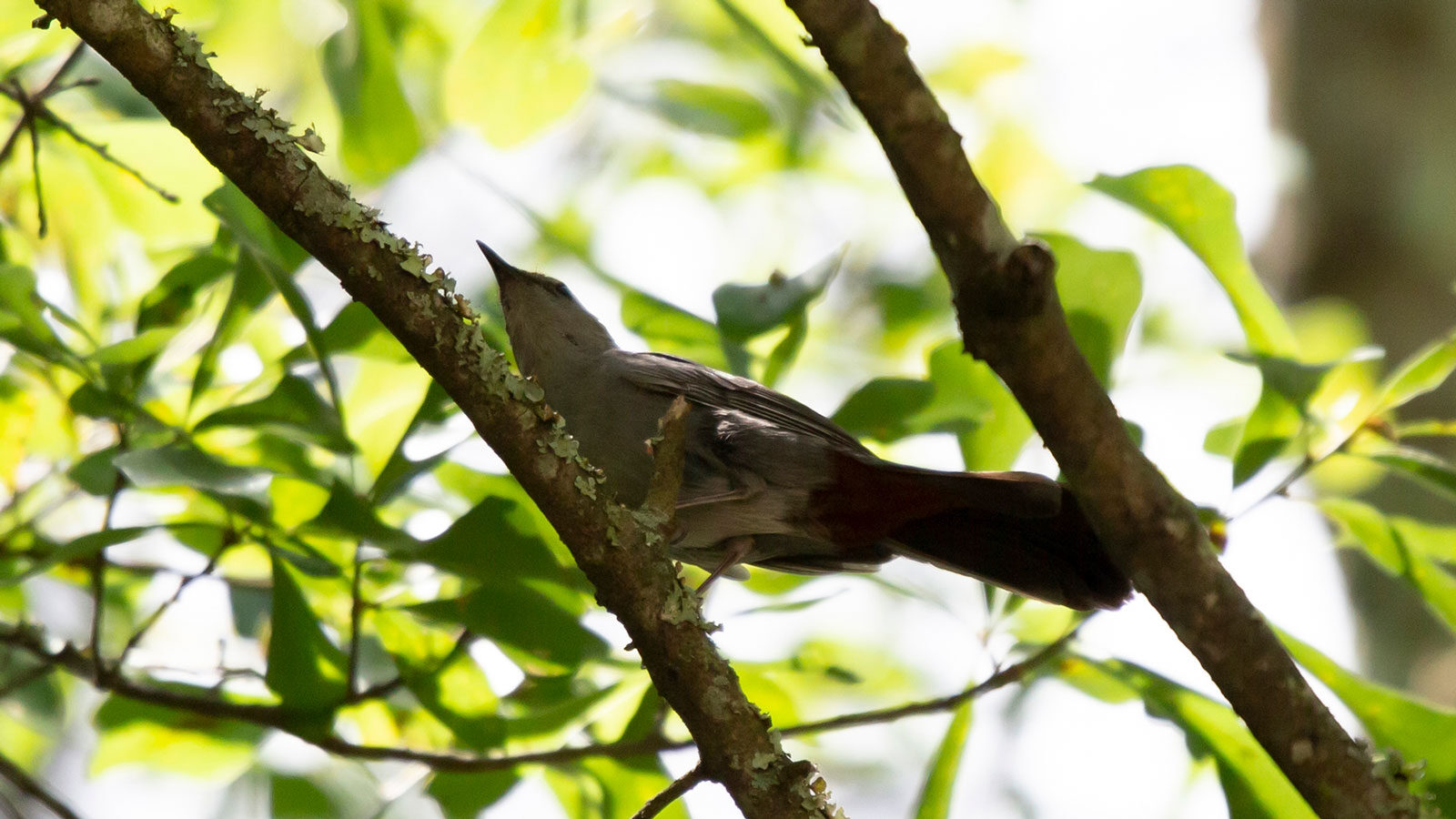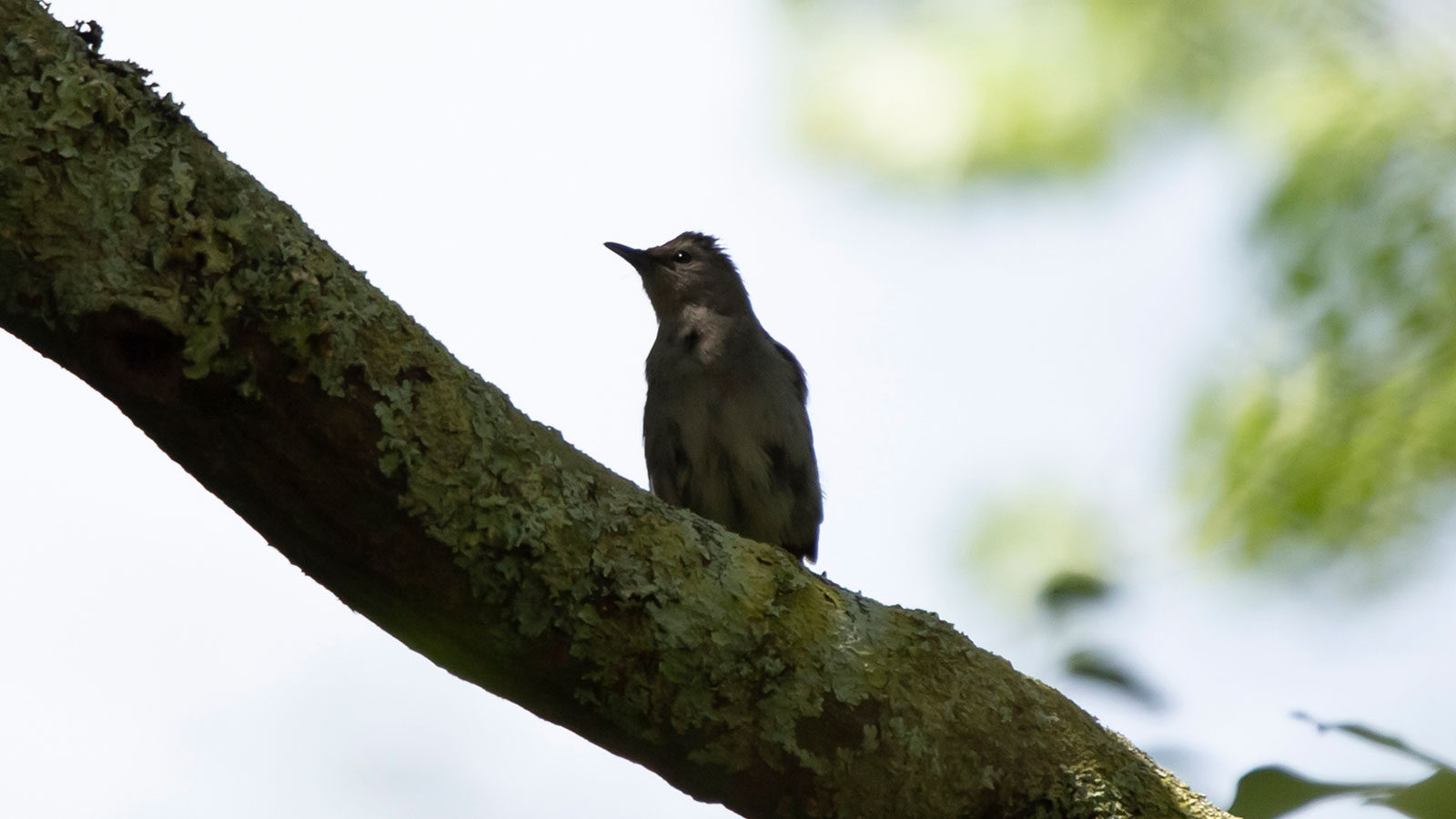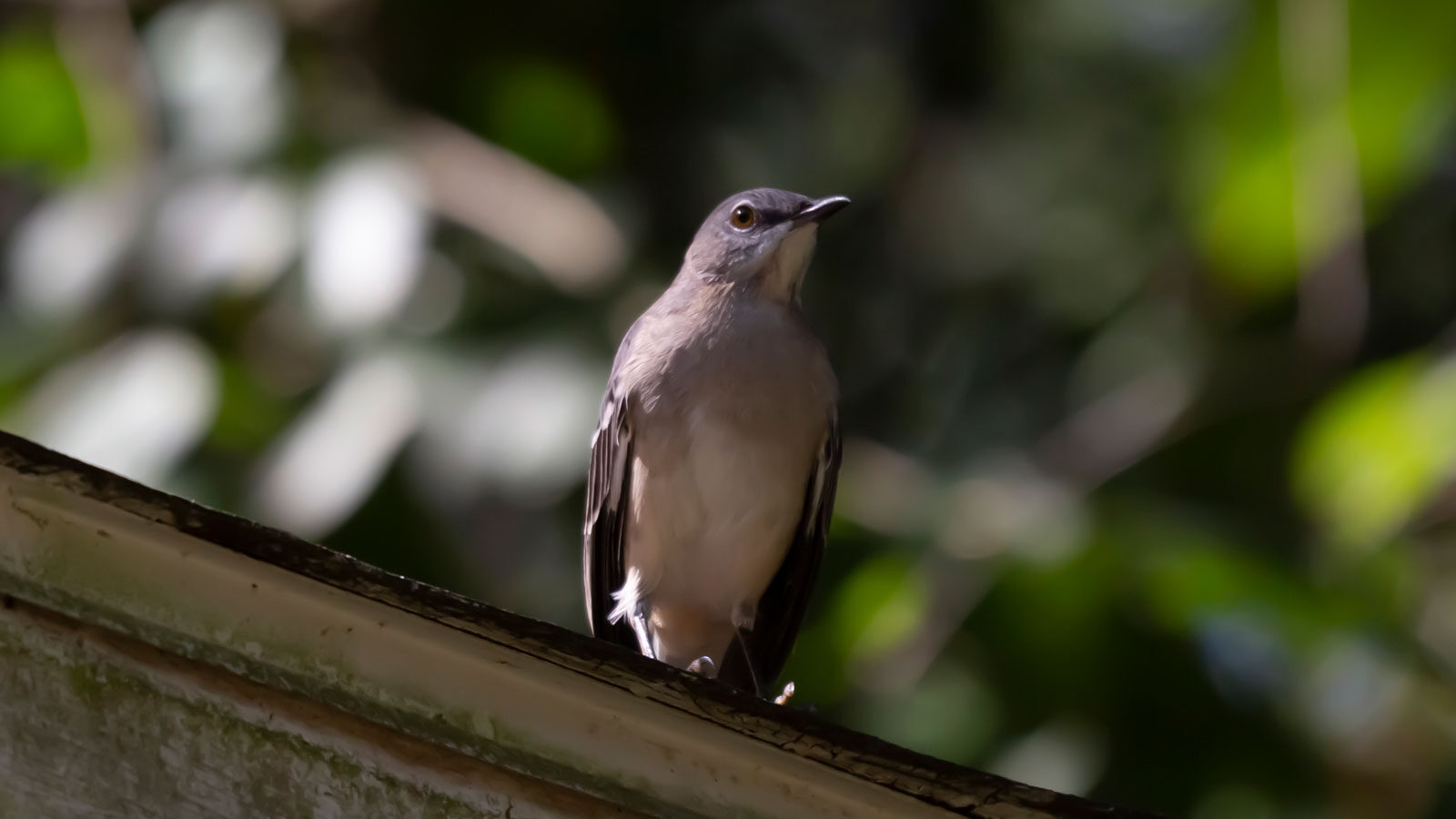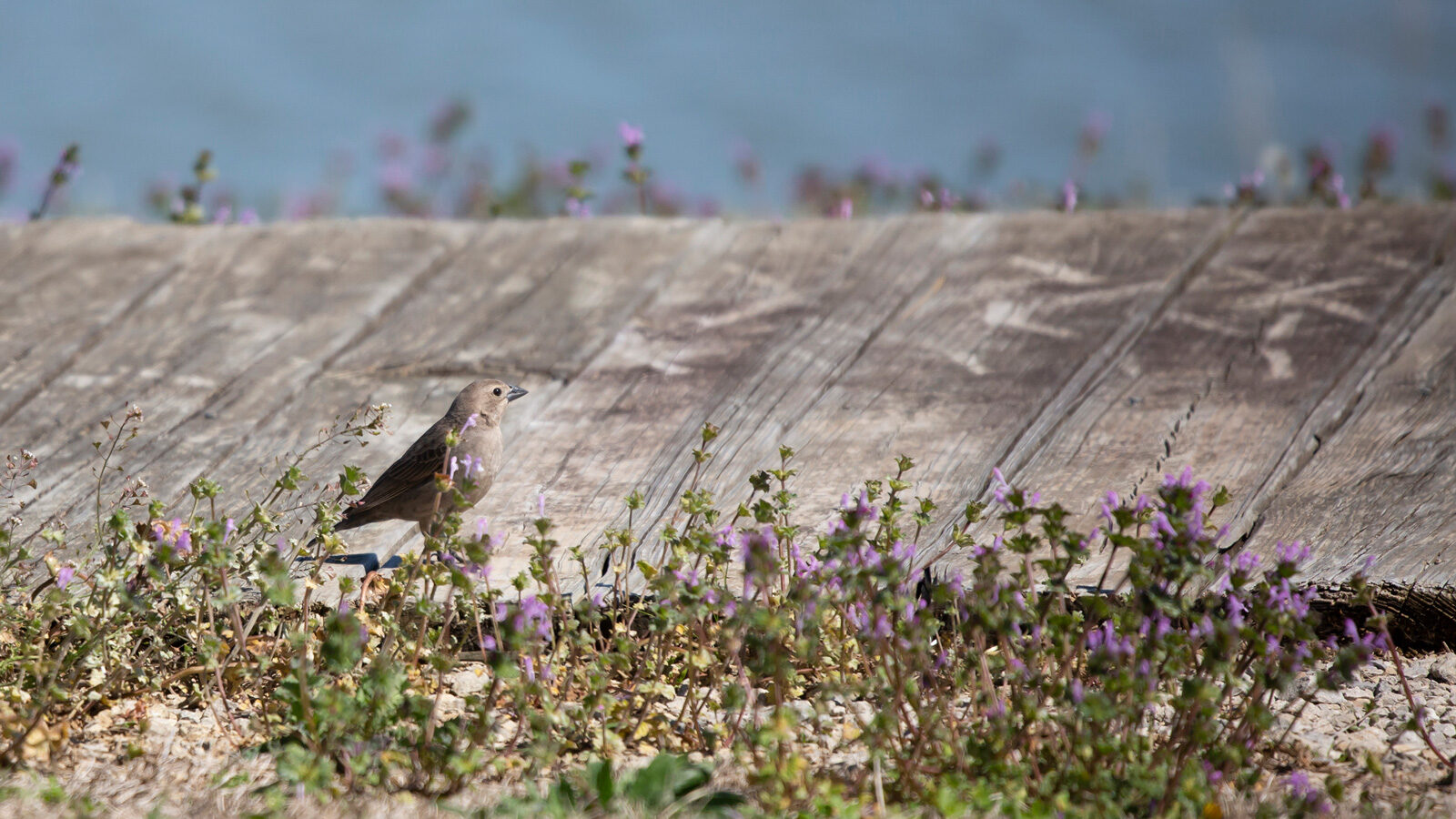
Did you know that gray catbirds can tell when brown-headed cowbirds lay eggs in their nests and throw the cowbird eggs out?
Gray Catbirds
at
a Glance

Key Features:
Gray catbirds are gray birds with long tails and cinnamon under their tails.
Least Concern - Population Stable
Habitat:
Gardens, fields, forest edges, and swamps with dense undergrowth
nesting habits:
Gray catbirds build nests on vines, in shrubbery, and in trees out of bark, grass, hair, mud, pine needles, rootlets, straw, and twigs.
seasons gray catbirds are active in our area:
Spring, summer
Diet:
Insects, berries, green briers, and poison ivy
hunting Behavior:
Gray catbirds forage on the ground under shrubbery and low tree branches.
Commonly Confused With:
Brewer's Blackbirds, Brown-Headed Cowbirds, and Northern Mockingbirds

Gray catbirds are often confused with northern mockingbirds because both are gray birds. Female northern mockingbirds have white throats, breasts, and bellies.

Gray catbirds are often confused with female brown-headed cowbirds because both are similar body shape and size. Female brown-headed cowbirds are a little bigger.